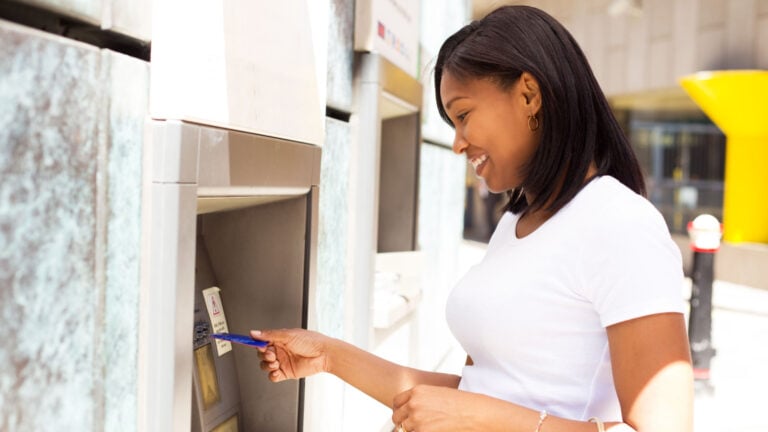
Source: Shutterstock
Editorial Note: InvestorPlace Beacon independently determines what we cover and recommend. We earn a commission from affiliate partners on many offers and links. However, these commissions do not affect our editors' opinions or evaluations. Click here to read our full advertiser disclosure.
Banking fees can cost you hundreds of dollars each year, and they often come as a surprise. Learn about the four most common bank fees and how to avoid them.
4 Common Banking Fees
- Monthly maintenance fee
- Nonsufficient funds (NSF) fee
- Out-of-network ATM fee
- Overdraft fee
Paying a few dollars here and there in bank fees may not seem like a huge deal, but those fees can add up over time and significantly eat away at your account balances. Consumers paid more than $7.7 billion annually in overdraft and NSF fees alone in 2022, according to the Consumer Financial Protection Bureau (CFPB).
Here are the types of banking fees to look out for, and how to avoid them so you can keep more of your money.
Monthly Maintenance Fee
A maintenance fee is what your bank will charge you simply for holding your money in one of their accounts. The average monthly fee for maintaining a checking account is $13.24, according to a recent MoneyRates study. That comes out to around $160 annually. Some high-yield savings accounts charge up to $25 per month, according to Experian.
But you can avoid this cost by finding checking and savings accounts that don’t charge maintenance fees — and there are many to choose from. According to a Bankrate study on bank fees, 87% of non-interest-bearing checking accounts are either free or can become free when direct deposit requirements are met.
Popular banks that offer free checking and savings accounts include Capital One, Ally Bank and Discover.
| Banking fee: | How to avoid the fee: |
| Monthly maintenance fee | Find a free checking and savings account |
Nonsufficient Funds Fee
A nonsufficient funds (NSF) fee occurs when your bank rejects payments that you don’t have enough money in your account to cover. They can come as a surprise: A CFPB survey published at the end of last year found that more than 25% of consumers say someone in their household was charged a NSF fee or overdraft fee within the past year, and that only 22% of households expected their most recent overdraft.
You can avoid NSF fees by setting up email or text alerts for when you have a low balance. That way, you’ll be notified before you accidentally make a purchase that would put your account into the negative.
| Banking fee: | How to avoid the fee: |
| Nonsufficient funds fee | Sign up for email and text alerts for when you have a low balance so you can make sure your funds don’t dip below zero |
Out-of-Network ATM Fee
Out-of-network ATM fees, which you’re charged when you use an ATM that isn’t in your bank’s network or their partners’ networks, have been on a steady rise. In 2023, Bankrate found that out-of-network ATM fees were at a record-high average of $4.73, beating the previous record of $4.72 in 2019.
The simple solution to avoiding this fee is to only use in-network ATMs. Many banks have partnerships with retailers and gas stations to provide a wide range of fee-free ATMs.
Most banks also have an ATM locator tool in their online app to help you find an in-network ATM near you.
| Banking fee: | How to avoid the fee: |
| Out-of network ATM fee | Only use your bank’s in-network ATMs |
Overdraft Fee
An overdraft fee occurs when your bank temporarily covers transactions that overdraw your account.
Like with nonsufficient fund fees, you can avoid overdraft fees by setting up a low-balance alert that will text or email you when your balance drops below a certain dollar amount. If you don’t catch the low balance in time and overspend, replace the funds as soon as possible. Some banks allow a grace period, usually one to two days, to replace your funds and waive the overdraft fee.
The average overdraft fee is $26.61, according to Bankrate. However, in January, President Joe Biden’s administration proposed a new regulation that would lower overdraft fees to as little as $3. If approved, the regulation is expected to take effect in October 2025.
Some banks also charge continuous overdraft fees, or daily overdraft fees, if your account remains overdrawn.
| Banking fee: | How to avoid the fee: |
| Overdraft fee | Set up a low-balance alert and/or repay the overdrawn amount right away |
Other Potential Fees to Consider
Other banking fees include:
- Inactivity fee: If you don’t make a deposit or withdrawal within a specific timeframe, your bank may charge you an inactivity fee.
- Wire transfers: Banks will often charge you to send money via a wire transfer, and some will charge you for receiving them as well.
- Early withdrawal penalty: Unlike with checkings and savings accounts, certificates of deposit (CD) have terms which indicate how long you need to leave your money untouched. If you tap into your funds before the term is up, you face a penalty fee.
Make sure to read the fine print of any bank account before opening it in order to avoid surprise fees.
Sources:
Gibson, K. (2024, January 17). Overdraft Fees Would Drop to As Little as $3 Under Biden Proposal. Retrieved from https://www.cbsnews.com/news/bank-overdraft-fees-cfpb-joe-biden/
Allianz. (2024, January 2). Fewer Americans are Optimistic About the Economy in 2024. Retrieved from https://www.allianzlife.com/about/newsroom/2024-Press-Releases/Fewer-Americans-are-Optimistic-About-the-Economy-in-2024
MoneyRates. (2023, December 28). Checking Account Fee Trend 2024: How to Avoid Higher Bank Fees. Retrieved from https://www.moneyrates.com/research-center/bank-fees/checking-account-fee-survey-how-to-avoid-higher-fees.htm
Consumer Financial Protection Bureau. (2023, December 19). CFPB Issues Report Showing Many Americans Are Surprised by Overdraft Fees. Retrieved from https://www.consumerfinance.gov/about-us/newsroom/cfpb-issues-report-showing-many-americans-are-surprised-by-overdraft-fees/
Bennet, K. & Goldberg, M. (2023, August 30). Survey: ATM Fees Hit Record High While Overdraft and NSF Fees Fell Sharply. Retrieved from https://www.bankrate.com/banking/checking/checking-account-survey/
Consumer Financial Protection Bureau. (2023, May 24). Overdraft/NSF Revenue Down Nearly 50% Versus Pre-Pandemic Levels. Retrieved from https://www.consumerfinance.gov/data-research/research-reports/data-spotlight-overdraft-nsf-revenue-in-q4-2022-down-nearly-50-versus-pre-pandemic-levels/full-report/
FDIC. (2022, August 17). Overdraft and Account Fees. Retrieved from https://www.fdic.gov/resources/consumers/consumer-news/2021-12.html



